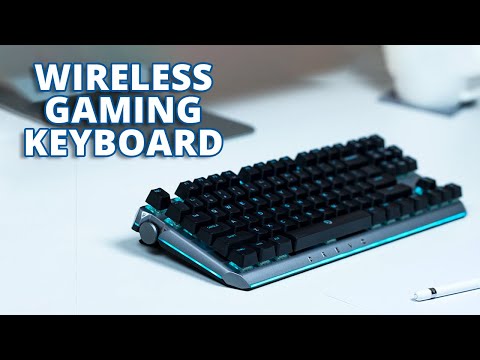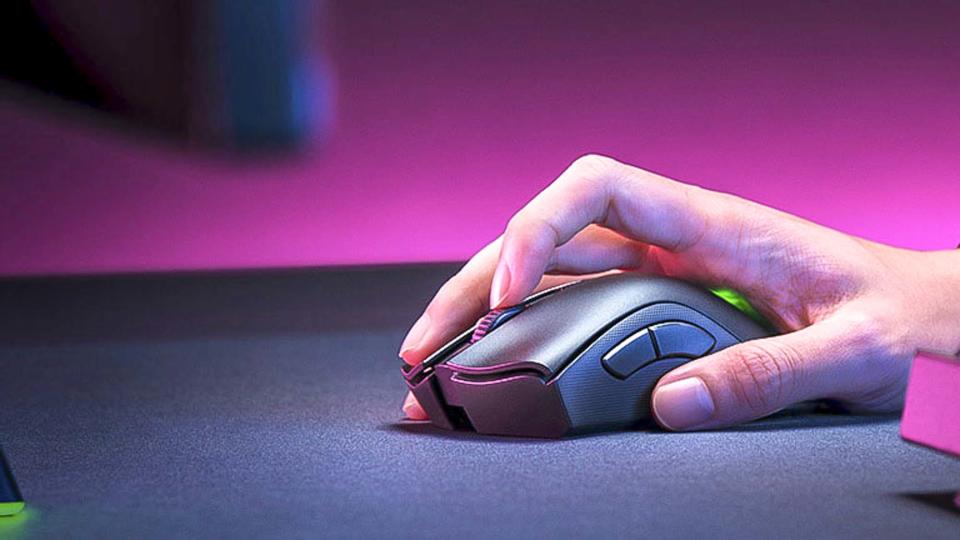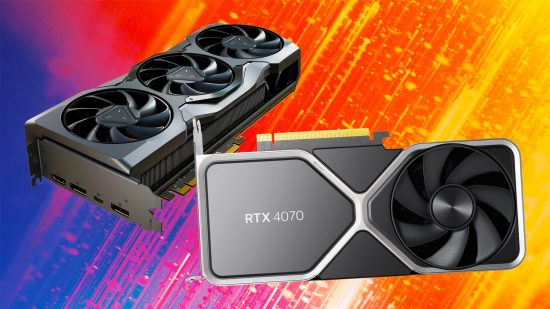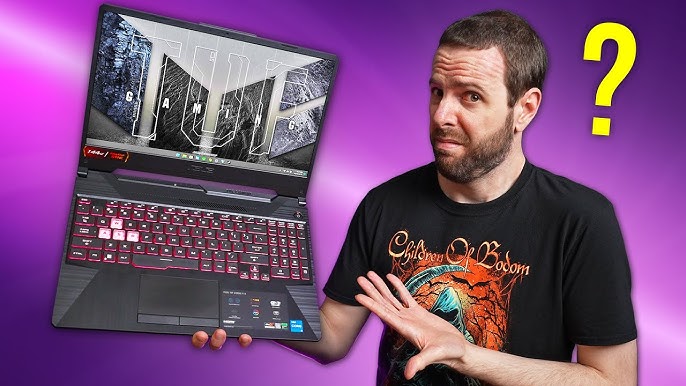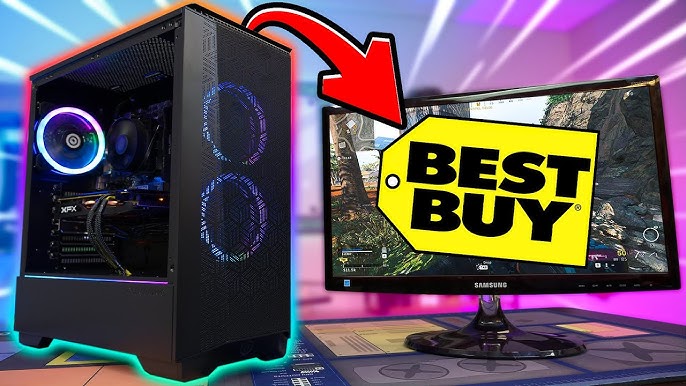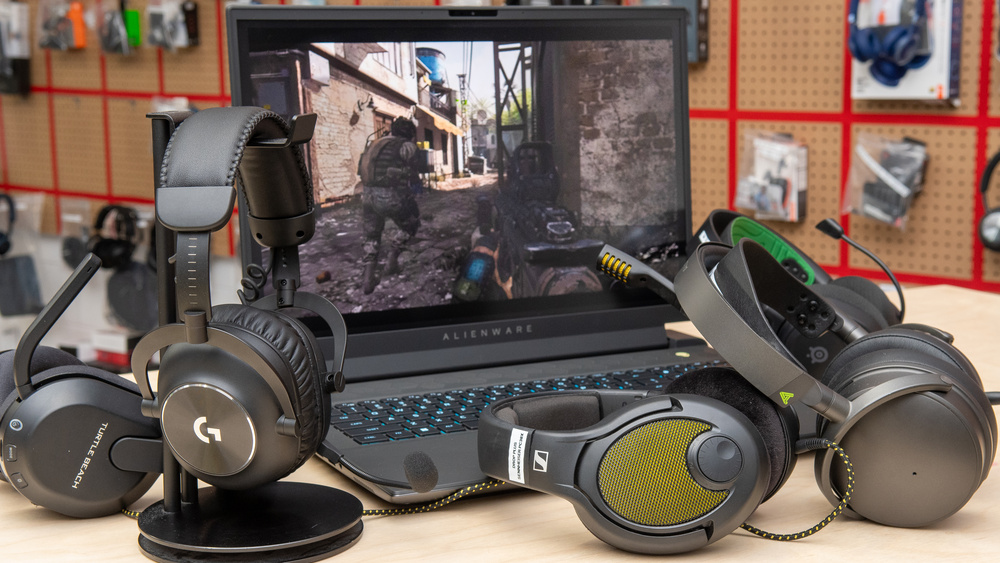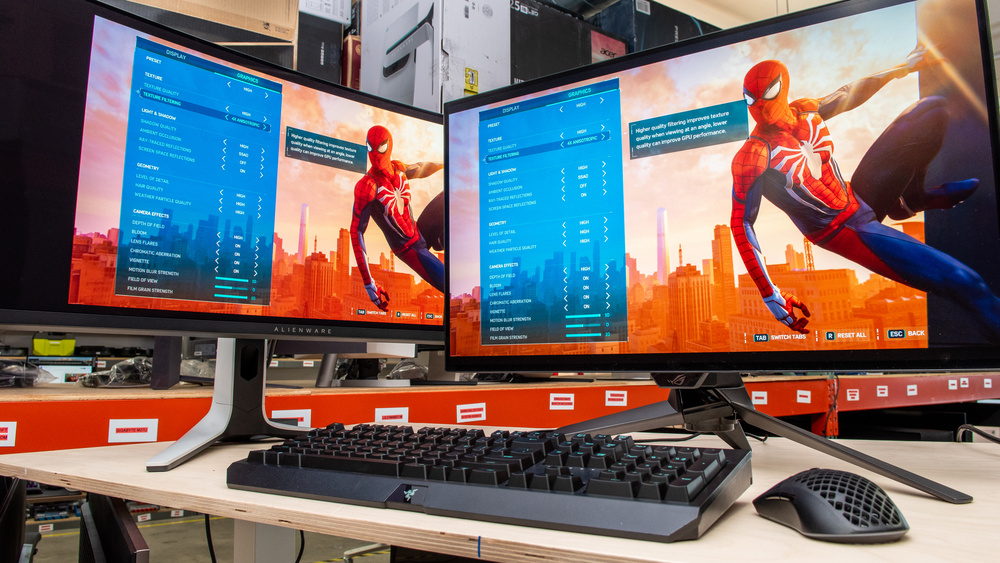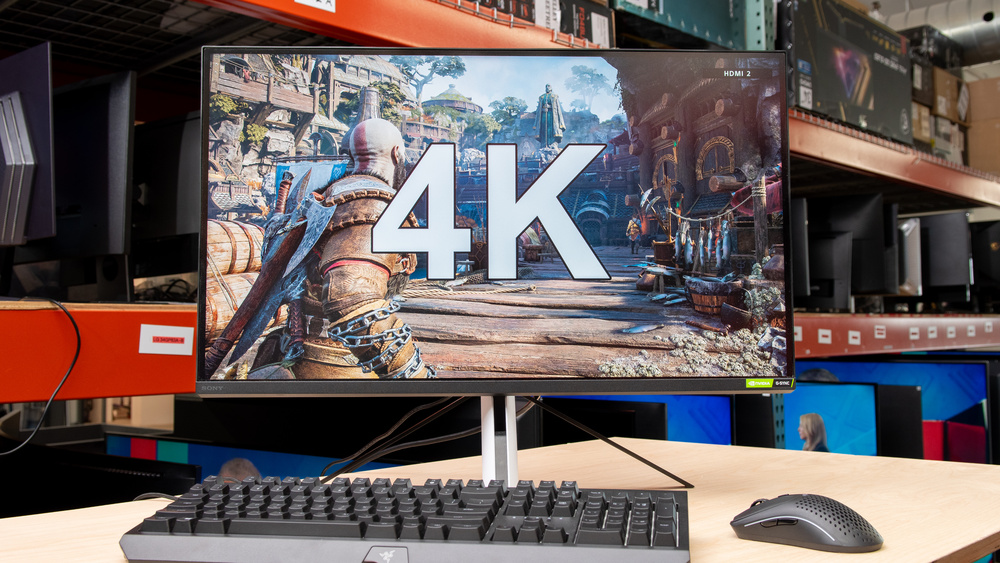10 Best Budget Gaming Laptops with Affordable Performance in 2025
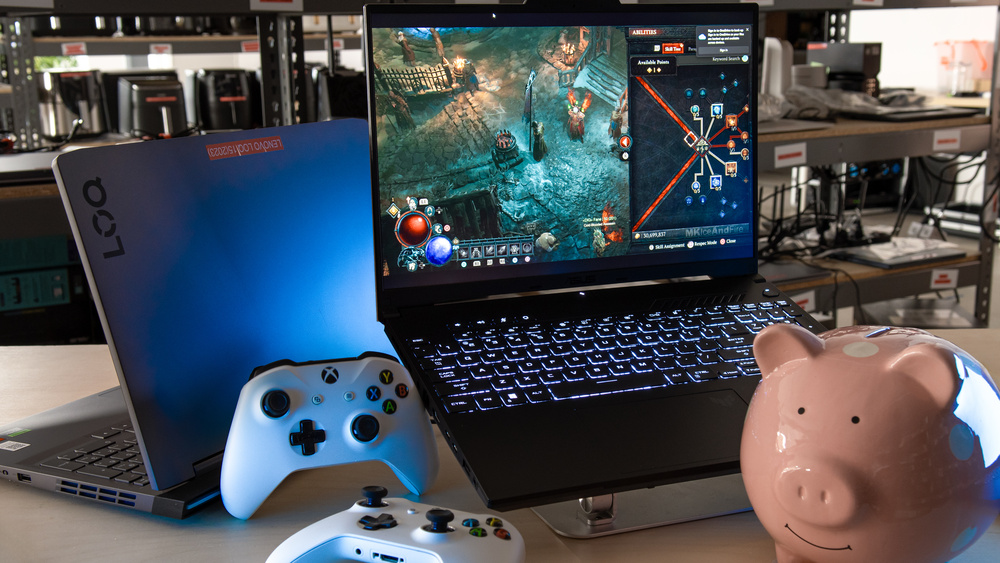
Finding the best budget gaming laptop can feel impossible when you’re balancing performance, graphics, and price. Whether you’re a student wanting solid FPS in Fortnite, a part‑time streamer on a tight budget, or someone who just wants smooth gameplay without overspending, you need the right machine.
In this guide, we reveal the top five best budget gaming laptops for around $1,000, compare the best affordable gaming laptop options, and give you the key factors to consider—so you can pick the best cheap gaming laptop that truly delivers. Read on, and level up your gaming today!
10 best budget gaming laptop worth your consideration
Before diving into our curated list of budget-friendly gaming laptops, it's essential to understand the balance between performance and affordability. The following selections offer impressive gaming capabilities without breaking the bank, ensuring you get the best value for your investment.
1. Acer Nitro 5
The Acer Nitro 5 combines an 11th‑Gen Intel Core i5‑11400H CPU with an NVIDIA GeForce GTX 1650 GPU to deliver smooth 1080p medium‑to‑high settings in both esports titles and AAA games, making it one of the most cost‑effective entry‑level gaming laptops available today.
Features
-
Processor: Intel Core i5‑11400H (6 cores, up to 4.5 GHz)
-
Graphics: NVIDIA GeForce GTX 1650 (4 GB GDDR6)
-
Memory & Storage: 16 GB DDR4 RAM, 512 GB SSD (upgradeable)
-
Display: 15.6″ FHD (1920×1080) IPS, 144 Hz refresh
-
Cooling & Weight: Dual‑fan cooling; approx. 2.20 kg
Pros and Cons
-
Pros:
-
High‑refresh‑rate display for smoother gameplay
-
Robust dual‑fan thermal design
-
Easily upgradeable RAM and storage
-
Cons:
-
Mediocre battery life (~5 hrs video playback)
-
Relatively bulky chassis, less portable
2. ASUS TUF Gaming F15
The ASUS TUF Gaming F15 pairs an Intel Core i7‑11800H processor with a GTX 1650 Ti GPU and a 144 Hz FHD IPS panel, delivering both durable MIL‑STD‑810H construction and consistently high frame rates—ideal for budget‑minded esports enthusiasts.
Features
-
Processor: Intel Core i7‑11800H (8 cores, up to 4.6 GHz)
-
Graphics: NVIDIA GeForce GTX 1650 Ti (4 GB GDDR6)
-
Memory & Storage: 16 GB DDR4, 512 GB SSD
-
Display: 15.6″ FHD IPS, 144 Hz refresh
-
Durability: MIL‑STD‑810H military‑grade chassis
Pros and Cons
-
Pros:
-
144 Hz high‑refresh display for competitive play
-
Rugged, MIL‑STD‑810H‑certified build
-
Comfortable, responsive keyboard feel
-
Cons:
-
Noticeable fan noise under load
-
Average color gamut coverage
3. HP Pavilion Gaming 15
The HP Pavilion Gaming 15 combines an AMD Ryzen 5 5600H CPU with an NVIDIA GTX 1650 GPU in a sleek chassis, offering reliable performance and style—an excellent pick for entry‑level gamers seeking the best cheap laptop for gaming.
Features
-
Processor: AMD Ryzen 5 5600H (6 cores, up to 4.2 GHz)
-
Graphics: NVIDIA GeForce GTX 1650 (4 GB GDDR6)
-
Memory & Storage: 8 GB RAM, 512 GB SSD (upgradeable)
-
Display: 15.6″ FHD, 60 Hz refresh
Pros and Cons
-
Pros:
-
Strong multi‑threaded Ryzen performance
-
Attractive, refined build quality
-
Cons:
-
60 Hz panel feels dated for gaming
-
Display brightness and color accuracy are underwhelming
4. Dell G3 15 (3500)
Understated yet powerful, the Dell G3 15 3500 houses a 10th‑Gen Intel Core i5‑10300H and GTX 1650 GPU, delivering solid mid‑range gaming performance in a discreet chassis—an excellent best‑budget‑laptop‐for‐gaming choice.
Features
-
Processor: Intel Core i5‑10300H (4 cores, up to 4.5 GHz)
-
Graphics: NVIDIA GeForce GTX 1650 (4 GB GDDR6)
-
Memory & Storage: 8 GB DDR4, 512 GB SSD; dual M.2 slots
-
Display: 15.6″ FHD, 120 Hz refresh
Pros and Cons
-
Pros:
-
120 Hz refresh for smoother visuals
-
Generous port selection (USB‑C, HDMI, RJ‑45)
-
Subtle, business‑like design
-
Cons:
-
Color and contrast are merely average
-
Runs hot under sustained load
5. Lenovo Legion Y540
The Lenovo Legion Y540 packs an Intel Core i7‑9750H and GTX 1660 Ti GPU into a streamlined chassis with effective cooling, emerging as a dark‑horse pick among the best cheap gaming laptops.
Features
-
Processor: Intel Core i7‑9750H (6 cores, 2.6–4.5 GHz)
-
Graphics: NVIDIA GeForce GTX 1660 Ti (6 GB GDDR6)
-
Memory & Storage: 16 GB DDR4, 1 TB PCIe SSD
-
Display: 15.6″ FHD IPS, 300 nits, 144 Hz refresh
Pros and Cons
-
Pros:
-
Strong GPU performance for the price
-
Excellent thermal handling
-
Bright, high‑refresh panel
-
Cons:
-
Distorted‑sounding speakers
-
Webcam placement could be better
6. MSI GF63 Thin
MSI GF63 Thin blends portability (under 5 lbs) with a Core i5‑11400H CPU and GTX 1650 Max‑Q GPU, offering a viable compromise of performance and mobility for budget‑oriented gamers.
Features
-
Processor: Intel Core i5‑11400H (6 cores, up to 4.4 GHz)
-
Graphics: NVIDIA GeForce GTX 1650 Max‑Q (4 GB GDDR6)
-
Memory & Storage: 8 GB DDR4, 256 GB NVMe SSD
-
Display: 15.6″ FHD IPS, 60 Hz refresh
Pros and Cons
-
Pros:
-
Remarkably light and thin design
-
Decent thermal management for the chassis size
-
Very budget‑friendly price point
-
Cons:
-
Single‑channel RAM limits performance
-
Short battery life (~2 hrs gaming, ~5 hrs browsing)
7. Acer Predator Helios 300
The Acer Predator Helios 300 brings an Intel Core i7‑9750H and GTX 1660 Ti GPU together with a 144 Hz IPS display, delivering near‑$1000 high‑end gaming performance in a competitive package.
Features
-
Processor: Intel Core i7‑9750H (6 cores, up to 4.5 GHz)
-
Graphics: NVIDIA GeForce GTX 1660 Ti (6 GB GDDR6)
-
Memory & Storage: 2×8 GB DDR4, 512 GB SSD
-
Display: 15.6″ FHD IPS, 144 Hz refresh
Pros and Cons
-
Pros:
-
Powerful GPU for high‑FPS gaming
-
144 Hz panel for ultra‑smooth visuals
-
Metal chassis aids cooling
-
Cons:
-
Abysmal battery life (~3 hrs)
-
Bulky and heavy for travel
8. ASUS ROG Strix G (G531)
The ASUS ROG Strix G (G531 series) combines a Core i7‑9750H CPU with a GTX 1650 GPU, a 120 Hz IPS panel, and customizable RGB lighting—making it a top contender for the best affordable gaming laptop.
Features
-
Processor: Intel Core i7‑9750H (6 cores, up to 4.5 GHz)
-
Graphics: NVIDIA GeForce GTX 1650 (4 GB GDDR5)
-
Memory & Storage: 16 GB DDR4 (up to 32 GB), 512 GB SSD
-
Display: 15.6″ FHD IPS, 120 Hz refresh
Pros and Cons
-
Pros:
-
RGB‑lit keyboard and chassis accents
-
120 Hz panel for fluid gameplay
-
Ample upgrade headroom (RAM/storage)
-
Cons:
-
Only 57% sRGB coverage
-
No Thunderbolt port
9. HP Omen 15
The HP Omen 15 sports an AMD Ryzen 7 5800H CPU and NVIDIA RTX 3050 Ti GPU alongside 64 GB RAM and 512 GB SSD, offering ray‑tracing at a sub‑$1000 price point—an enticing prospect for best gaming laptops about $1000.
Features
-
Processor: AMD Ryzen 7 5800H (8 cores, up to 4.4 GHz)
-
Graphics: NVIDIA GeForce RTX 3050 Ti (4 GB GDDR6)
-
Memory & Storage: 64 GB DDR4, 512 GB SSD
-
Display: 15.6″ FHD IPS, 144 Hz refresh
Pros and Cons
-
Pros:
-
Hardware‑accelerated ray tracing support
-
Massive 64 GB RAM for multitasking
-
144 Hz high‑refresh display
-
Cons:
-
Only 4 GB VRAM can bottleneck some new titles
-
Bulky chassis limits portability
10. Dell Inspiron G5 15 5500
The Dell Inspiron G5 15 5500 features an Intel Core i5‑10300H CPU, GTX 1650 Ti GPU, 8 GB DDR4, 512 GB SSD, and a 120 Hz display—delivering a balanced mid‑range gaming experience around the $1,000 mark.
Features
-
Processor: Intel Core i5‑10300H (4 cores, up to 4.5 GHz)
-
Graphics: NVIDIA GeForce GTX 1650 Ti (4 GB GDDR6)
-
Memory & Storage: 8 GB DDR4-3200, 512 GB NVMe SSD
-
Display: 15.6″ FHD, 120 Hz refresh
Pros and Cons
-
Pros:
-
Sturdy build quality with minimal chassis flex
-
Effective thermal performance for sustained gaming
-
Optional 144 Hz upgrade available
-
Cons:
-
Washed‑out, sub‑par display
-
Mediocre connectivity options (no Thunderbolt)
-
Hefty weight (~2.34 kg)
Here's a structured comparison table for the 10 Best Budget Gaming Laptops, covering Name, Core Features, Pros & Cons, and Best Use Cases:
| Name | Core Features | Pros & Cons | Best For |
| Acer Nitro 5 | - i5-11400H + GTX 1650 - 16GB RAM, 512GB SSD - 144Hz FHD IPS - Dual-fan cooling |
✅ High refresh rate, upgradeable ❌ Mediocre battery, bulky |
Entry-level gamers, upgradability seekers |
| ASUS TUF Gaming F15 | - i7-11800H + GTX 1650 Ti - MIL-STD-810H build - 144Hz FHD IPS - 16GB RAM |
✅ Rugged design, high refresh ❌ Loud fans, average colors |
Esports enthusiasts, rough environments |
| HP Pavilion Gaming 15 | - Ryzen 5 5600H + GTX 1650 - 8GB RAM, 512GB SSD - 60Hz FHD - Sleek design |
✅ Strong CPU, stylish ❌ Dated 60Hz, weak display |
Casual gamers, budget-conscious buyers |
| Dell G3 15 | - i5-10300H + GTX 1650 - 120Hz FHD - Dual M.2 slots - Business-like design |
✅ Smooth 120Hz, subtle look ❌ Runs hot, average display |
Students, work-play balance |
| Lenovo Legion Y540 | - i7-9750H + GTX 1660 Ti - 144Hz FHD, 300nits - 1TB SSD - Excellent cooling |
✅ Great GPU, bright screen ❌ Bad speakers, odd webcam |
Performance-focused budget gamers |
| MSI GF63 Thin | - i5-11400H + GTX 1650 Max-Q - 8GB RAM, 256GB SSD - 60Hz FHD - Ultra-light (1.8kg) |
✅ Portable, affordable ❌ Single-channel RAM, short battery |
Traveling gamers, lightweight needs |
| Acer Predator Helios 300 | - i7-9750H + GTX 1660 Ti - 144Hz FHD - Metal chassis - 16GB RAM |
✅ High FPS, premium build ❌ Terrible battery, heavy |
Performance seekers, desktop replacement |
| ASUS ROG Strix G | - i7-9750H + GTX 1650 - 120Hz FHD - RGB lighting - 16GB RAM (upgradable) |
✅ Customizable RGB, upgradeable ❌ Poor color gamut |
RGB lovers, future upgraders |
| HP Omen 15 | - Ryzen 7 5800H + RTX 3050 Ti - 144Hz FHD - 64GB RAM - Ray tracing support |
✅ Ray tracing, massive RAM ❌ 4GB VRAM limit, bulky |
Mid-range gamers, multitaskers |
| Dell Inspiron G5 15 | - i5-10300H + GTX 1650 Ti - 120Hz FHD - Sturdy build - Good thermals |
✅ Durable, thermal efficient ❌ Bad display, heavy |
Long gaming sessions, durability needs |
Key Takeaways:
-
Best Overall Performance: Acer Predator Helios 300 (GTX 1660 Ti)
-
Best Budget Esports: ASUS TUF F15 (144Hz + military-grade)
-
Best Portability: MSI GF63 Thin (under 2kg)
-
Best Future-Proof: HP Omen 15 (RTX 3050 Ti + 64GB RAM)
-
Best Value: Acer Nitro 5 (balanced specs + upgradability)
Key Factors to Consider When Selecting the Best Budget Gaming Laptop
Below is an expanded, reader‑friendly discussion of the six key factors you must weigh when choosing the best budget gaming laptop. Each section explains why it matters, what to look for, and how it impacts your real‑world gaming experience.
1. GPU Performance
Your laptop’s GPU (graphics processing unit) is the single most important determinant of in‑game frame rates and graphical fidelity. A discrete GPU like the NVIDIA GTX 1650 or better is the baseline for smooth 1080p gaming at medium to high settings.
Modern titles such as Cyberpunk 2077 or Call of Duty can push hundreds of millions of polygons per frame; the GPU handles these complex calculations, from lighting to textures, ensuring you hit at least 60 FPS for a fluid experience.
When comparing GPUs, look beyond model numbers. Pay attention to VRAM capacity (4 GB minimum for 1080p, 6 GB+ for high‑settings) and boost clock speeds, as these directly influence your ability to play at higher resolutions or detail levels.
2. CPU Power
While the GPU renders visuals, the CPU (central processing unit) orchestrates game logic, physics, and AI. A weak CPU can “bottleneck” a strong GPU, capping frame rates even when your graphics card is capable of more.
For modern gaming and multitasking—such as streaming or voice chat—a quad‑core Intel Core i5 or AMD Ryzen 5 (6 cores/12 threads) is the practical minimum. These processors deliver enough single‑threaded performance for game loops and enough multi‑threaded muscle for background tasks.
If you plan to run CPU‑intensive background applications (e.g. recording or streaming software), consider a six‑core or eight‑core CPU. This headroom prevents frame‑rate dips when your system juggles gaming and recording simultaneously.
3. Display Refresh Rate
The refresh rate—measured in hertz (Hz)—is how many times per second your screen updates. A 60 Hz panel redraws 60 times/sec, while a 120 Hz or 144 Hz panel doubles that, significantly reducing motion blur and input lag in fast‑paced games.
Competitive FPS titles (e.g. Valorant, CS:GO) benefit most: higher refresh rates let you spot enemies sooner and track movement more smoothly, translating directly into improved aim and reaction times.
Note that to fully utilize a 144 Hz screen, your GPU must consistently output close to 144 FPS. Balancing GPU settings (medium vs. ultra) may be necessary to sustain high frame rates.
4. Thermals & Build Quality
Sustained gaming generates heat; without proper cooling, your CPU/GPU will throttle down to avoid damage, causing stutters. A robust metal chassis and dual‑fan or vapor‑chamber design maintain safe temperatures during marathon sessions.
Look for laptops with heat pipes and well‑ventilated air intakes. Some models even include software‑controlled fan curves, letting you prioritize silence or maximum cooling as needed.
Build quality also affects longevity. A sturdier frame resists flex and protects internal components. Military‑grade (MIL‑STD‑810H) certification is a plus, indicating resistance to shocks, vibration, and temperature extremes.
5. Upgradeability
A truly “future‑proof” budget gaming laptop offers expansion slots so you can add RAM or a second SSD down the line. Extra SO‑DIMM slots and M.2 bays let you boost memory from 8 GB to 16 GB+ and add high‑capacity NVMe storage without replacing the entire machine.
This matters because games and applications grow more demanding each year. Rather than buying a new laptop in two‑three years, you can simply install more RAM or a larger SSD to extend usable life.
Before purchasing, check the service manual or manufacturer’s spec sheet to confirm how many slots are free and which components are user‑replaceable.
6. Battery Life & Portability
Budget gaming laptops often sacrifice battery capacity for performance and cooling. Under load, many achieve only 2–3 hours of gameplay on battery; on lighter tasks, 5–6 hours is typical.
If you plan to game unplugged—on a train or in a café—look for laptops with larger batteries (60 Wh+) and power‑efficient GPUs (Max‑Q variants). Also consider overall weight: sub‑2.5 kg designs are easier to carry daily.
Remember that charging speed matters too. Laptops supporting 65 W USB‑C or 100 W+ proprietary charging let you top up quickly between sessions.
Conclusion
Whether you need the best gaming laptop under 1000 for eSports, the best inexpensive gaming laptop for casual play, or the best cheap gaming laptops that still pack a punch, our top ten list covers every scenario. We broke down specs, pros and cons, and buying criteria so you can confidently choose the best budget gaming laptop that fits your needs and budget.
Ready to level up? Shop now and experience next‑level performance without overspending!
FAQs
-
What’s the best budget laptop for gaming?
The Acer Nitro 5 often tops this list thanks to its Core i5, GTX 1650, and upgradeable design—delivering solid 1080p gaming under $1,000. Anyway, if you are seeking the best gaming laptop without worrying about your tiny budget, then keep on reading to find the best suit. -
Which is the best cheap gaming laptop?
The ASUS TUF Gaming F15 balances price, durability, and a 144 Hz display, making it one of the best cheap gaming laptops for under $1,000. -
What is the best affordable gaming laptop with RTX?
The HP Omen 15 with RTX 3050 offers entry‑level ray tracing at about $1,000, making it a top affordable choice. -
Are cheap gaming laptops worth it?
Yes—models with GTX 1650 or better can run most AAA titles at medium settings, offering excellent value for budget‑conscious gamers. -
Best gaming laptops for about $1,000?
Look at the Acer Predator Helios 300, Dell G3 15, and Lenovo Legion Y540—they deliver GTX 1660 Ti or better for roughly $900–$1,000. -
What should I look for in a budget gaming laptop?
Prioritize GPU (GTX 1650+), CPU (Intel i5/Ryzen 5+), at least 8 GB RAM, 120 Hz display, and good thermals for the best experience.
